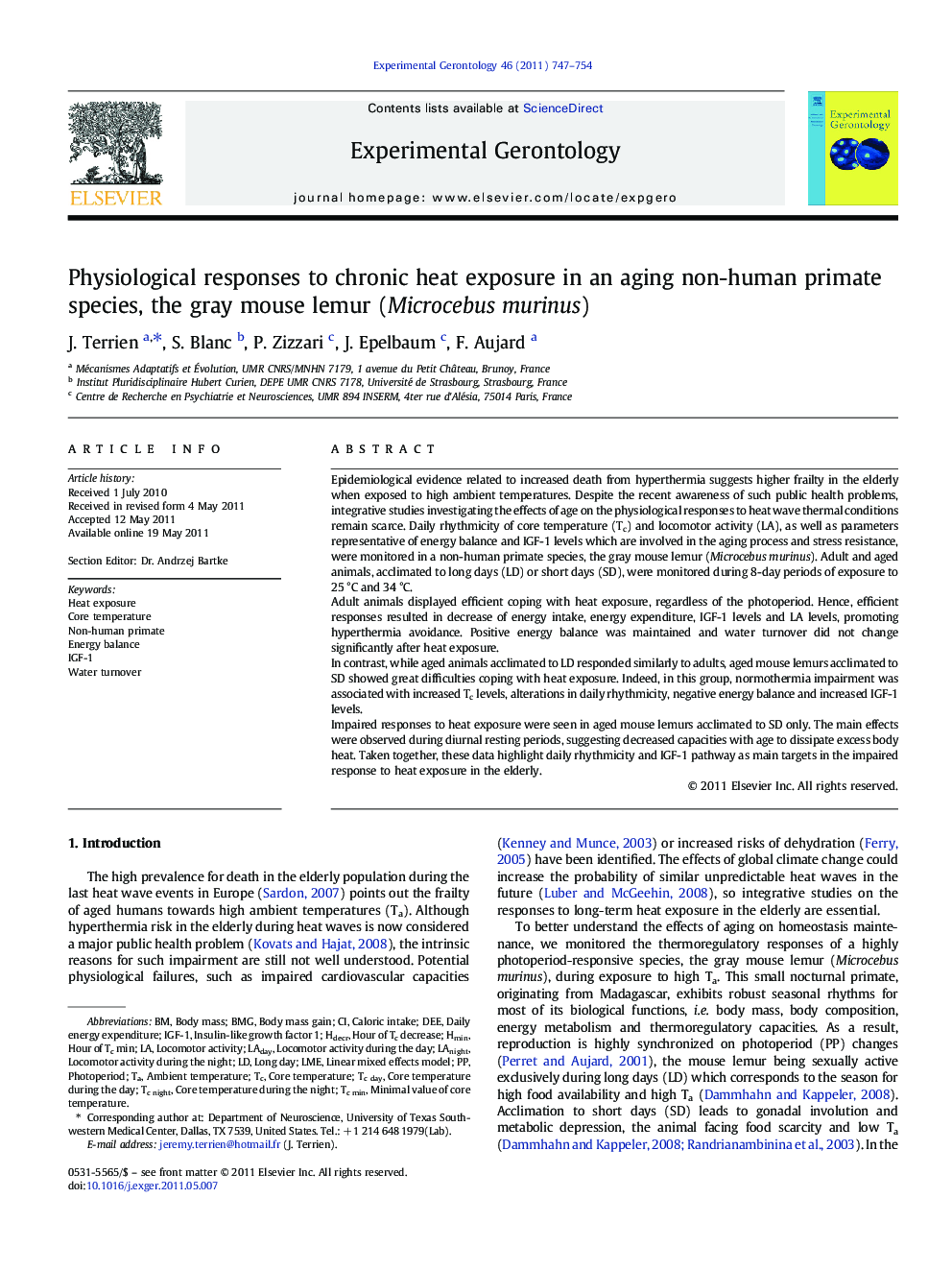| کد مقاله | کد نشریه | سال انتشار | مقاله انگلیسی | نسخه تمام متن |
|---|---|---|---|---|
| 1906439 | 1046288 | 2011 | 8 صفحه PDF | دانلود رایگان |

Epidemiological evidence related to increased death from hyperthermia suggests higher frailty in the elderly when exposed to high ambient temperatures. Despite the recent awareness of such public health problems, integrative studies investigating the effects of age on the physiological responses to heat wave thermal conditions remain scarce. Daily rhythmicity of core temperature (Tc) and locomotor activity (LA), as well as parameters representative of energy balance and IGF-1 levels which are involved in the aging process and stress resistance, were monitored in a non-human primate species, the gray mouse lemur (Microcebus murinus). Adult and aged animals, acclimated to long days (LD) or short days (SD), were monitored during 8-day periods of exposure to 25 °C and 34 °C.Adult animals displayed efficient coping with heat exposure, regardless of the photoperiod. Hence, efficient responses resulted in decrease of energy intake, energy expenditure, IGF-1 levels and LA levels, promoting hyperthermia avoidance. Positive energy balance was maintained and water turnover did not change significantly after heat exposure.In contrast, while aged animals acclimated to LD responded similarly to adults, aged mouse lemurs acclimated to SD showed great difficulties coping with heat exposure. Indeed, in this group, normothermia impairment was associated with increased Tc levels, alterations in daily rhythmicity, negative energy balance and increased IGF-1 levels.Impaired responses to heat exposure were seen in aged mouse lemurs acclimated to SD only. The main effects were observed during diurnal resting periods, suggesting decreased capacities with age to dissipate excess body heat. Taken together, these data highlight daily rhythmicity and IGF-1 pathway as main targets in the impaired response to heat exposure in the elderly.
Figure optionsDownload as PowerPoint slideResearch highlights
► Acclimation to summer prevented adult and aged mouse lemurs from normothermia impairment when exposed to heat exposure.
► Appropriate coping with heat exposure leads to maintenance of positive energy balance and unchanged water turnover.
► Aged mouse lemurs acclimated to winter showed severe normothermia impairment, leading to negative energy balance.
Journal: Experimental Gerontology - Volume 46, Issue 9, September 2011, Pages 747–754